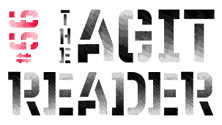
Book of Love
Lullaby
Candy Carol
Love Bubble
Noble Rot
If there is an album that sounds like what coming of age in the ’80s should, it is perhaps Book of Love’s self-titled album. Originally released in 1986 on Sire, the band’s debut was composed on the synths of times, but was also ensconced with a purity of emotion that is rare in any decade. In songs like “You Make Me Feel So Good,” “Modigliani (Lost In Your Eyes),” “Boy,” and especially, “I Touch Roses,” the four former art students created a sweet elixir of naivety, romanticism and bright melodies—all the makings of perfect pop. Their synthetic confections were light and airy (and, as was proved in clubs at the time, danceable, if you were so inclined), but spun with the kind of gilded lovestruck themes found in the Spector era. Touches of melancholy aligned them with like-minded electro-pop innovators like Depeche Mode and Yaz, and hence, slightly left of the mainstream, even though it’s hard to imagine such pop splendor not selling if given airplay.
Twenty-some years later, with Noble Rot giving the album, as well as the other three records in the Book of Love catalog, the remaster, expand and reissue treatment, much of Book of Love remains just as enchanting as it once was. The aforementioned highlights are the brightest spots, though the band’s cover of the Liliput (nee Kleenex) classic “Die Matrosen” and ballad “White Lies” are nearly as compelling. It is only elsewhere that any aging can be heard, but then those were never the strong points to begin with.
With Book of Love’s follow-up, 1988’s Lullaby. the pixiedust of the first record was already starting to be spread thin. “Pretty Boys and Pretty Girls” was the band’s highest charting single to date, but didn’t compare to the magic of a “Boy” or “I Touch Roses.” So too with “Melt My Heart,” which features a lead keyboard line that could have been lifted from Depeche Mode and remains Lullaby’s highpoint. On the other end, the Bewitched inspired rap of “Witchcraft” was a bad idea from the start. In general, here, with producer Flood, Book of Love favors grandiosity, and it doesn’t suit them. Ted Ottaviano, the band’s most prolific songwriter and the album’s co-producer, even admits in the liner notes that at the time of Lullaby’s completion, he thought, “I’m not sure if we got it.” He was probably at least half-right.
The band definitely didn’t get it with Candy Carol, its third record from 1991. It’s hard to pinpoint what exactly is wrong with the album, and that’s perhaps because it’s so aflutter with ideas and sounds. The record was supposedly more of a group effort, and that certainly could be the reason for such a lack of cohesion and spark. Or it could just be the poor songwriting.
By 1993’s Love Bubble, as the band will readily admit, the gig was pretty much up. And while it’s probably saying something when a record’s best cut is a cover (in this case, David Bowie’s “Sound and Vision”), the album isn’t as bad as it could have been. While more often than not Book of Love seems to be trying it’s hand at the techno of the time, elsewhere (“Flower in My Hand,” particularly) there are glimpses of what they once were. That this album—and the two before it—have largely been forgotten isn’t so much an indication of being unremarkable, though that’s true in some ways, but just that Book of Love peaked early and left nowhere else for themselves to go but downhill.
Stephen Slaybaugh
PAST PERFECTS
REM, Reckoning
Black Rio 2: Original Samba Soul 1971-1980
Pisces, A Lovely Sight
Big Star, #1 Record/Radio City
Mirrors, Something That Would Never Do
Various Artists, Smart's Palace
Miles Davis, Sketches of Spain
39 Clocks, Zoned
Company Flow, Funcrusher Plus
Nick Cave & the Bad Seeds, From Her to Eternity, The Firstborn Is Dead, Kicking Against the Pricks, and Your Funeral... My Trial
Stark Folk, Stark Folk
Dntel, Early Works For Me It It Works For You II
Cocteau Twins, The Pink Opaque
Ray Charles, Genius: The Ultimate Ray Charles Collection
